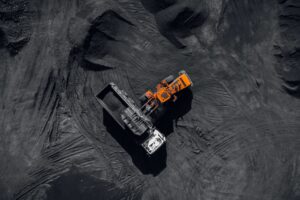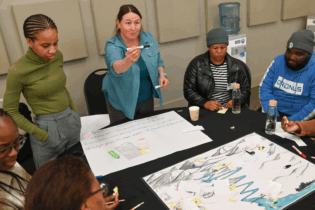Water availability is a key investment risk to mining in many African countries. According to Peter Shepherd, partner and principal hydrologist at SRK Consulting, water allocation demands early attention and a commitment to meeting stringent compliance and best practice requirements. Shepherd highlighted that national regulations are often onerous, and any project’s motivation for a water use licence needs to be both detailed and scientifically sustainable.

Resilience
While mines work to reduce their carbon footprint as part of their contribution to the planet’s future, there are also impacts which climate change is already having on operations. Rainfall patterns are changing; even where the annual rainfall remains similar, there are more exaggerated peaks and troughs – heavy downpours followed by long period of little rain, for instance. Mines have always needed to manage water levels through and between rainy seasons, but it is becoming more challenging. Return water dams and settlement ponds need to retain as much water as possible for the dry periods, while still having capacity to absorb extra water during the rainy season. Variations to historical rainfall patterns means that extra capacity is needing to be designed into this infrastructure. Water quality “Mining with less water also requires better containment strategies for water of poor quality,” he said. “Recycling and re-use inevitably concentrates the level of salts and metals, and mines then need to isolate this water so that it can be either chemically treated or removed from site altogether as a hazardous liquid.” Shepherd emphasised that a mine’s water management strategy is increasingly part of its social licence to mine, as any use of this scarce resource must be seen to be equitable. Engagement with local authorities and communities is crucial in this respect, allowing new water infrastructure to be developed collaboratively. Especially where water is being transported long distances to the mine, additional distribution networks to local communities can be planned and implemented. Managing water scarcity through modelling Water resources modelling is becoming more important as a tool to help plan and manage South Africa’s scarce water supply. Kerry Grimmer, a principal hydrologist at SRK Consulting, has emphasised that this modelling has to consider complex hydrological systems, the uncertainty of climate change, and the protection of the environment. “Reservoirs and water supply systems are generally sized and operated based on studies which use long-term historical hydrological data, most notably streamflow and rainfall data,” she explained. “From these studies, operating rules are developed, allowing dam operators to manage their dams by maximising water resources.” This helps ensure the security of water supply for users, such as the mining industry, to sustain and develop the economy of the region.







